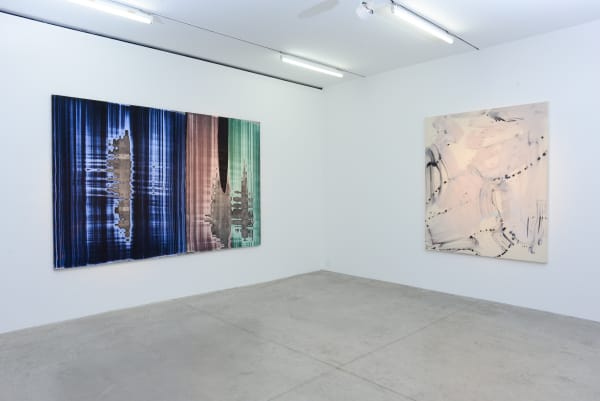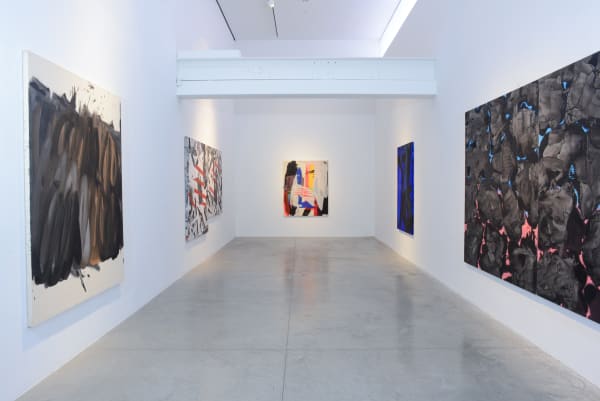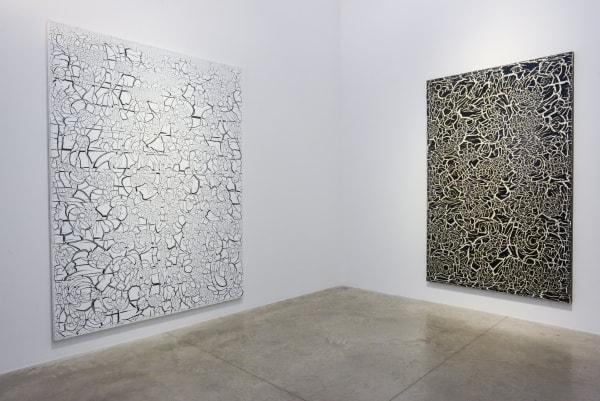Ed Moses: Diamond Jim
Opening Reception Thursday, May 3
6-8pm
“Actually I love to paint. I’m the Hungry Ghost. There’s a glow as if the painting is imbued with some energy field, something primordial that is responsive to my obsession – the obsession of the Hungry Ghost.” - Ed Moses, Venice Beach, CA. (2013)
NEW YORK, NY | albertz benda is honored to present Ed Moses: Diamond Jim focusing on the artist’s work on canvas of the past three decades. This exhibit follows Moses’s first ever East Coast survey, Painting as Process 1951-1999, at albertz benda, New York (2016) and California Dreaming: Ed Moses, Billy Al Bengston, & Ed Ruscha curated by Thomas Krens for the New Britain Museum of American Art, CT (2017). Diamond Jim comprises key series from this period including Whiplines, Crackle, Scrapers, and Magma.
Moses continually expressed the importance of process over the finished object. His efforts to embody physical motion and his emphasis on mark making lead him to experiment with a wide range of techniques and nontraditional tools - such as mops and squeegees. Moses was simultaneously open-ended in his style and highly focused in his attention to material, gesture, and pictorial space; shifting between techniques and processes enabled the artist to generate a large and diverse oeuvre.
An intuitive and inquiring approach has guided Moses since the beginning of his artistic career. A longtime student of Buddhism, which since the 1970’s increasingly influenced his practice, he stated the goal is not the thing; the path is the thing...the process, this meandering.”
For Moses, painting’s identity was multiple and changing – working with canvases stretched on the floor, the dynamic abstract compositions in Diamond Jim (2008), Ignon (2006), and Bronco (2002) are the result of of the artist’s rejection of conventional brushes in favor of mixing paints on the surface of the canvas itself. In the freestanding, multi-panel painting Frog 9 (2014), he removed the piece from the confines of the wall to create a new relationship between the work, the viewer, and the space.
Paintings such as Krak-BLK (2014) reflect the artist’s embrace of accident and chance, coupled with his exacting attention to the chemical properties of his materials. Priming the canvas with a base layer of color, Moses would then pool what he called a “secret sauce” on the surface. Once the layer had dried, he hit the canvas with his fist or his elbow to produce delicate, radiating patterns.
ABOUT ED MOSES [1926 – 2018]
Ed Moses was born on April 9, 1926 in Long Beach, California.
He had his first exhibition at Ferus Gallery in 1958 while still a graduate student at UCLA. It was at Ferus that Moses would become a member of the raucous group of artists known as the “Cool School” -which included Craig Kauffman, Billy Al Bengston, Robert Irwin, Edward Kienholz, Ken Price, Ed Ruscha, Larry Bell, John Altoon and Wallace Berman—all of whom pushed the boundaries of Post-War art and shaped the nascent LA art scene at a time when almost none existed.
His first museum shows were in 1976, marking a transitional moment in his career: a show of drawings from 1958-1970s at the Wight Gallery at UCLA, and a show of new abstract and cubist red paintings at LACMA curated by Stephanie Barron. While drawing was prominent in his work in the 1960s and early 70s, by the mid-70s, Moses turned primarily to painting. He was the subject of a major retrospective at MOCA Los Angeles in 1996, and in 2014 he showed at University of California Irvine where he had taught in the 70s. In 2015, LACMA held a major exhibition of his drawings from the 1960s and 70s, organized by Leslie Jones.
Moses’s work is included in the collections of the Los Angeles County Museum of Art (LACMA), Los Angeles Museum of Contemporary Art, The Hammer Museum, San Francisco Museum of Modern Art, Whitney Museum of American Art, and The Museum of Modern Art in New York, among others.






